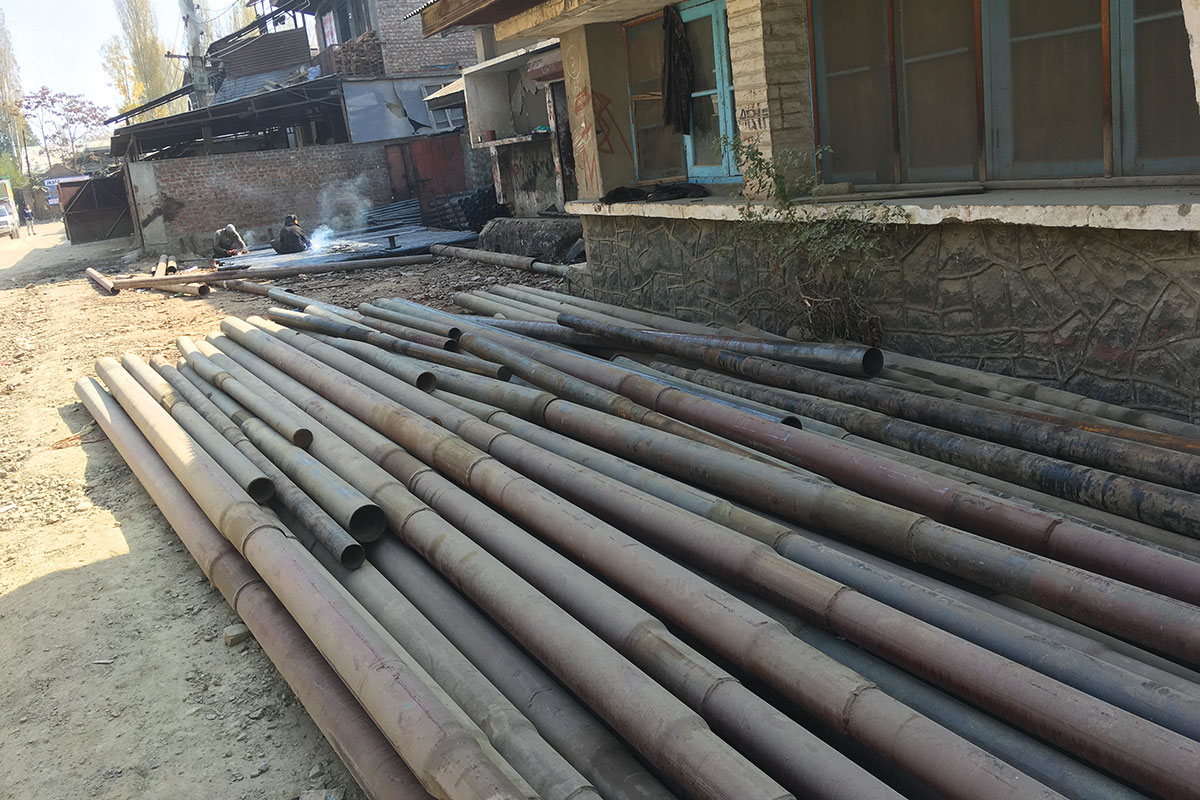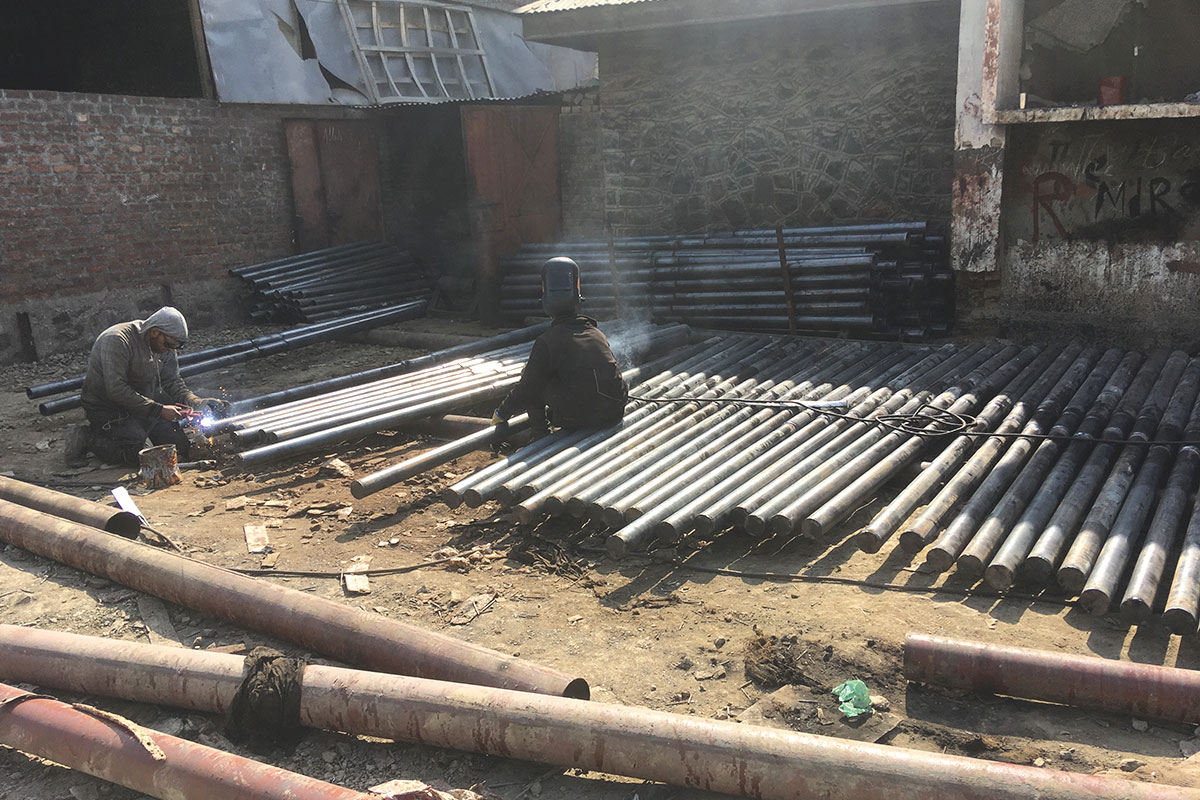Government’s effort to complete an electrification project ahead of schedule has helped a new group of entrepreneurs to get into the manufacture and value addition of items that state’s power distributors require, reports Masood Hussain

Generation and transmission apart, the state’s power distribution set-up is hugely dependent on the local industrial manufacture. Over the years, a number of entrepreneurs with sound financial and engineering backing have jumped into the manufacture of various products that keep the flickering hopes alive that Kashmir, one day might have all the solutions to all the energy problems.
“Across the state, there are almost 80 units manufacturing various items that the power development department (PDD) requires,” Mohammad Ashraf Mir, one of the entrepreneurs already in this sector, said. “The fact is that we may not have work for all the days of the year but the reality is that we are solely dependent on the power lines.”
Basically, a set of schemes, mostly the central sponsored, are fundamental to the flip that the power manufacturing sector is getting. Initially, it was the Accelerated Power Development and Reforms Programme (APDRP) that the central government launched in 2002. Aimed at reducing the Aggregate Technical and Commercial (AT&C) losses in the power sector, the plan envisaged strengthening and upgrading the sub-transmission and distribution system of high-density load centres like towns and industrial centres. Jammu and Kashmir had its own problems. Because of the security situation, not many major companies were willing to come to the state. Some work was done, but not much, and the funding pattern was assistance from the centre only.
The central government in 2008 restructured the APDRP and converted it into a central scheme, the R-APDRP. This scheme had two parts with the same objective of reducing the losses. The first part, which was more about mapping, came as 100 per cent central sponsored, and in the second part, Jammu and Kashmir as a special category state got 90 per cent. The interesting part of the scheme, according to planning officials in the government, was that if the states would hit the target, the funds would convert into a grant. In case, they failed, the funds spent under the scheme would become loans. Though a lot of transformation capacity was added and parts of distribution networks were improved, officials admit, “Net outcome was unimpressive”. The project had a sanctioned cost of Rs 1870 crore.
Prime Minister Narendra Modi announced Pradhan Mantri Sahaj Bijli Har Ghar Yojana (Saubhagya) In September 2017. The scheme is aimed at achieving universal household electrification. In the case of Jammu and Kashmir, funds come as a grant to the tune of 85 per cent. When the scheme was announced, Jammu and Kashmir had 1547332 of its 1915727 households un-electrified. The scheme will conclude by November 2018.
“We have to actually cover 3.82 lakh families and 2.50 lakh we have already done,” a senior state government official, privy of the developments, said. “We are right now trying to complete the project by October 31. If we do it, we will get an award of Rs 100 crore for completing the project before the deadline is over, and that is why we are so keen to achieve it.”
These three schemes and many others falling under the Prime Minister Development Fund (PMDP) have been the key factor is giving a flip to the industrial manufacture. The Saubhagya scheme actually requires taking the lines to the un-electrified areas for which the government is in the requirement of three things: the steel tubular poles, the conductors, transformers and other basic requirements for making the supply possible.
In order to achieve the target, the industries department managed the inclusion of a new group of entrepreneurs to get into the electric pole business. “We had a detailed meeting with the PDD and we assured them that the people already working in the sector have enough of capacity to deliver,” Industries Commissioner Shalinder Kumar said. “This was assured by the unit holders and the PDD agreed and this helped us introduce the new crop of entrepreneurs into the field, and we are hopeful that we will achieve the target.”
Since the requirement of the poles is of the order of 258408, the new set of entrepreneurs will supplement the efforts all others are doing. “We are 35 new players, and some of us have made the basic investments in getting the machine and are in the process of securing the raw material,” Merhrajuddin, one of the new entrants to the field, said. “Our steel fabrication units were not doing much this past year and the new assignment will hopefully help us sail through.”
“It is highly capital intensive because you have to import the pipes and then join two or, in certain cases, three pieces to make a single pole,” Naeem Raja, who heads the electrical industrial units in Kashmir, said. “Margins are better to units who can store the raw material or purchase outside the bank loan. It also hugely depends on how quickly the end user releases the payment.”

Raja said that most of the units work seasonally on one thing. “This is a fact that these days, tabular pole making is the priority, but once the project closes, we will get back to the other allied manufacturing activity, maybe transformers and other things,” he said.
Though there are a number of units having an investment in the power conductor manufacture the surging aluminium costs have prevented them from getting into it. “We have a unit in Jammu that has a huge capacity to store in advance and it helps him to hedge the cost risk,” Raja said. “This is a factor that we are unable to match.”
The introduction of the GST, local manufacturers said, has created a common market which has given a level playing field for all. “When some non-local major companies got major contracts under various schemes, we expected they would purchase part of the requirement from local units,” one insider, who spoke on the anonymity, said. “But because of GST, they got almost everything from outside. In certain cases, in which the toll and entry tax made some of their items expensive, they made local purchases.”
What worries some of the key players in the power manufacturing sector is that the increase in players will reduce the pie. “Some units were doing 3000 poles a year, and now they may get reduced numbers to deliver which can tell upon their viability,” one of the members said. “To hedge that risk, we are now getting into allied activities. If somebody was into transformers, he has added another unit that takes care of the poles and other fabrication works. That is how we will have to sustain in the long run.”
Raja said that the particular scheme will help the unit holders to go to the next level. “We already have one success story in Alba Power,” Raja said. “There are huge competition and not much of the work, but that is how we have survived and struggled for all these years.” He said the local industrial units which work with the power sector must be having a cumulative business of Rs 70 crore or maybe more, in a year.
The real flip, however, could have been if the power sector projects – transformation, HTL and other items, could be broken into smaller projects which would help the local players to get in. “All the major projects are bagged by major companies on basis of the huge balance sheet and they come with everything from own vendors,” Raja said. “That is why the major investment in Jammu and Kashmir is not helping the local economy to grow. Even under the central laws, the major project implementing agencies should essentially get almost thirty per cent of their requirements locally, which is usually being implemented in breach.”















